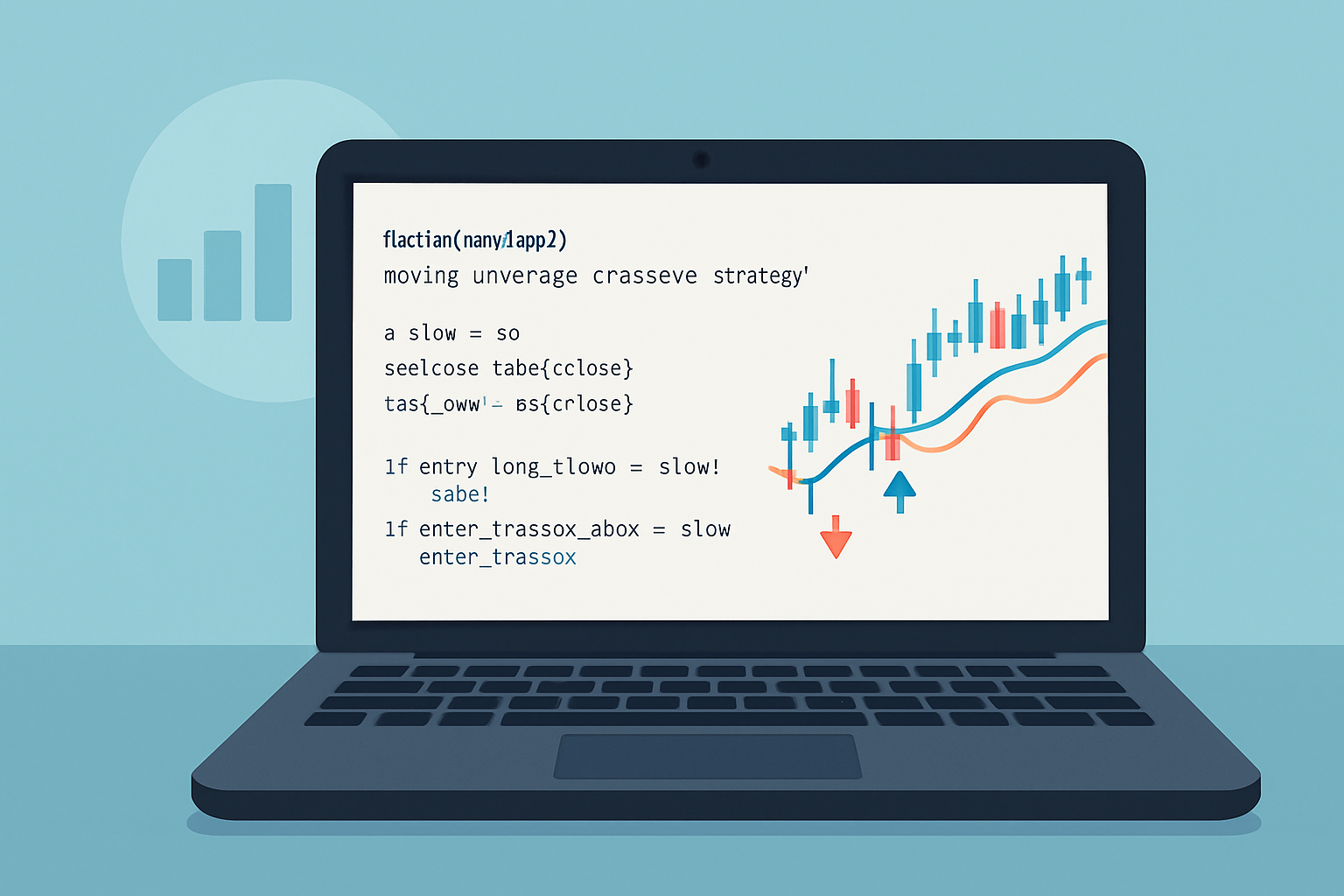
How to Use TrendSpider for Replay Practicing?
Master replay practicing with TrendSpider to refine your trading strategies by simulating historical...

In this article we’ll guide traders through the ins and outs of building and testing custom strategies on TradingView helping you make smarter, more confident trading decisions.
Learning how to backtest on TradingView lets you peek into the past performance of a trading strategy without risking a single dime. TradingView takes the edge off this process with its Pine Script editor, making it easy for traders to quickly cook up and fine-tune their own custom strategies.
Backtesting is basically running your trading strategy through the wringer using past market data to get a sense of how it might have actually played out. It’s a vital step that helps traders not only confirm their hunches but also uncover any sneaky flaws they might have missed, all while tweaking their strategies before diving into the real deal.
Before you jump headfirst into coding your custom strategy take a moment to create a TradingView account and get cozy with its interface. TradingView offers a free plan that is pretty handy but if you want to play in the big leagues upgrading to Pro+ or Premium opens the door to more advanced backtesting tools and a deeper dive into historical data.
Head over to TradingView.com and sign up for a free account using your email or a social login—it’s quick and painless.
Take a moment to explore the TradingView dashboard. It’s full of user-friendly charting tools and has a navigation menu that will keep you from feeling lost.
Open any chart that interests you, then click the ‘Pine Editor’ button at the bottom of the screen to start scripting.
Make sure there is enough historical data for your chosen instrument and timeframe. Without that, your backtesting might feel a bit like reading tea leaves.
Pine Script is TradingView's very own scripting language, designed for crafting custom indicators and trading strategies. It’s pretty straightforward to get the hang of and does a solid job when it comes to building simple yet effective scripts.
study() for strategy() to start your script. It’s a subtle change that makes all the difference.strategy.entry() to open positions. When it’s time to close, strategy.close() or strategy.exit() are your go-to commands and reliable finishers in your trading playbook.
Example Pine Script code for a simple moving average crossover strategy
Picture a moving average crossover strategy where you jump in to buy as soon as the short-term average sneaks above the long-term average, then sell when it slips back down. This script decks out both averages and depends on strategy.entry and strategy.close to manage those vital trade signals.
Once you’ve applied your strategy script to a chart, TradingView jumps into action by running simulated trades using historical bars. You’ll see a detailed performance summary paired with visual trade markers right there on the chart—nice and convenient.
Add your Pine Script strategy to an active chart using the Add to Chart button in the editor.
Keep an eye out for trades marked by colorful arrows and lines because these show where you’re entering and exiting the market.
Hop over to the Strategy Tester tab to dig into detailed performance stats like net profit, maximum drawdown and win rate. It’s the report card for your strategy.
Take a good look at the equity curve and trade list to get a clearer sense of how steady and risky your approach really is.
Use these insights to fine-tune your strategy’s logic and aim for that sweet spot of better performance. It’s a bit of trial and error but hey, that’s where the fun begins.
When crafting solid strategies, try to steer clear of overfitting your backtests—it's a classic pitfall. Stick to realistic market assumptions and give your approach the once-over across various timeframes and symbols to really see if it can stand the heat.
Backtesting can feel like a bit of a juggling act, but with the right approach, it’s a powerful tool to sharpen your trading game. From my experience, a few thoughtful tweaks here and there can really elevate your results. So, let’s dive into some practical tips that’ll help you squeeze every bit of insight from TradingView’s backtesting features without breaking a sweat.
TradingView lets you simulate realistic market conditions by factoring in things like commissions and slippage right within your Pine Script. You can tack on transaction costs to your strategy, giving you a much clearer picture of how it might actually perform out there in the wild. Specifying order types adds another layer of realism to mimic how trades really get executed.
When learning how to backtest on TradingView, you might encounter pesky script errors or results that don’t add up. Getting a grip on common hiccups and knowing how to tackle them is key to keeping your development and testing on track. Whether you’re untangling code mysteries, wrestling with data limits or navigating Pine Script’s quirks.
Struggling to improve your trading performance? Edgewonk's advanced analytics tools are designed to give you the edge you need.
With detailed trade journaling, robust strategy analysis, and psychological insights, you'll gain a comprehensive understanding of your strengths and weaknesses. Don't miss out on this game-changing opportunity.
Traders, it's time to elevate your game. Edgewonk is the ultimate trading journal software designed to empower you with data-driven insights and personalized strategies. Take control of your trading journey and maximize your potential.
11 articles published
Driven by a passion for democratizing financial markets, he creates accessible trading education content that bridges the gap between complex strategies and retail investors.
Read Posts
Master replay practicing with TrendSpider to refine your trading strategies by simulating historical...

Discover how to leverage TradingView’s backtesting tools and Pine Script to validate and optimize yo...

Master TrendSpider's backtesting features with this practical guide, designed to help traders valida...

Unlock the full potential of TrendSpider with this authoritative guide to TrendSpider University tra...
